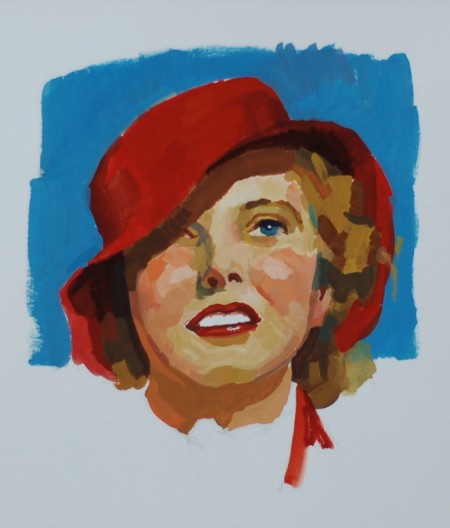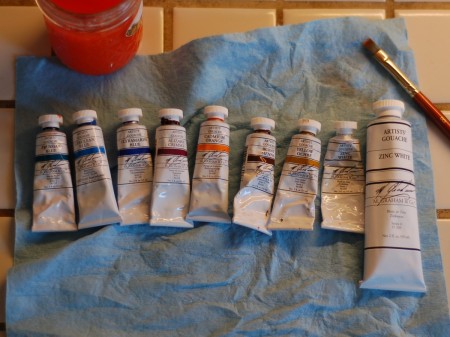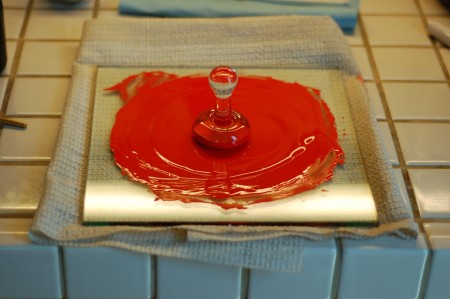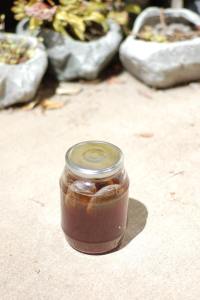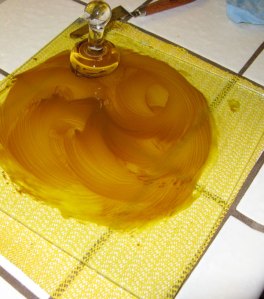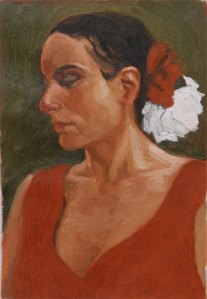Periodically someone on WetCanvas will pipe up and ask the crowd to list their picks for the best gouache brand. All due respect for my fellow artists, but some of the responses make me think a lot of people just haven’t tried very many varieties. There are others out there besides the ones you can get at Michael’s.
I have a good friend, an illustrator who’s unfortunately developed some rather horrific allergies to certain art materials, including solvents, alkyds and even most watercolor preservatives. (Yes, he’s that sensitive. Airbrushers take note: if it’s in the air, it’s quietly bulding up in your body.) I emailed M. Graham on his behalf to ask about their gouache ingredients. Unsurprisingly, they couldn’t list for me their proprietary ingredients; however, they kindly offered to send us some sample tubes. When I received them I was pleased to find they weren’t the miniscule promotional samples I’ve seen from other companies, but full-sized, 15ml tubes.
It turns out that not only are M. Graham gouaches one of only two brands my friend can safely use, but we were both blown away by the quality of the paint. Their gouache prices are so reasonable ($12.50 for a tube of genuine cadmium orange!) you might think they couldn’t be that good. But they are. Out of the six or seven artist-quality gouache brands I’ve had the opportunity to sample, they’re tied for first place with Schmincke (also amazing, but considerably pricier). And their pigment lineup is attractive, with a full range of cadmiums, a PB36 cerulean (yummy!), Prussian blue, viridian, etc. No, I’m not getting paid to say it. I’m happy to plug a great company with such a fantastic gouache offering. These paints come fully recommended by moi.
I’m currently trying to get my hand back in by doing some gouache sketches, so I filled out my palette.
Here are my M. Graham colors:
For those longtime readers shocked to see a synthetic organic on my palette, the alizarin crimson is just a placeholder to jumpstart my sketching until I can make some of my own gouache paints to supplement these. Yes, of course I’ll be making my own! In fact, I’ve already started:
Bispo’s remedy for mulling paint on a hot summer day: sun tea!
For instant sun tea, try Trader Joe’s Irish Breakfast Tea—it’ll be ready in a jiffy. The stuff’s serious. (No, I’m not using a pigment jar for my beverage—perish the thought!)
As for the Sisyphean task of keeping ant scouts from suiciding in your vermilion during mulling, I’ll leave that post for another day.
